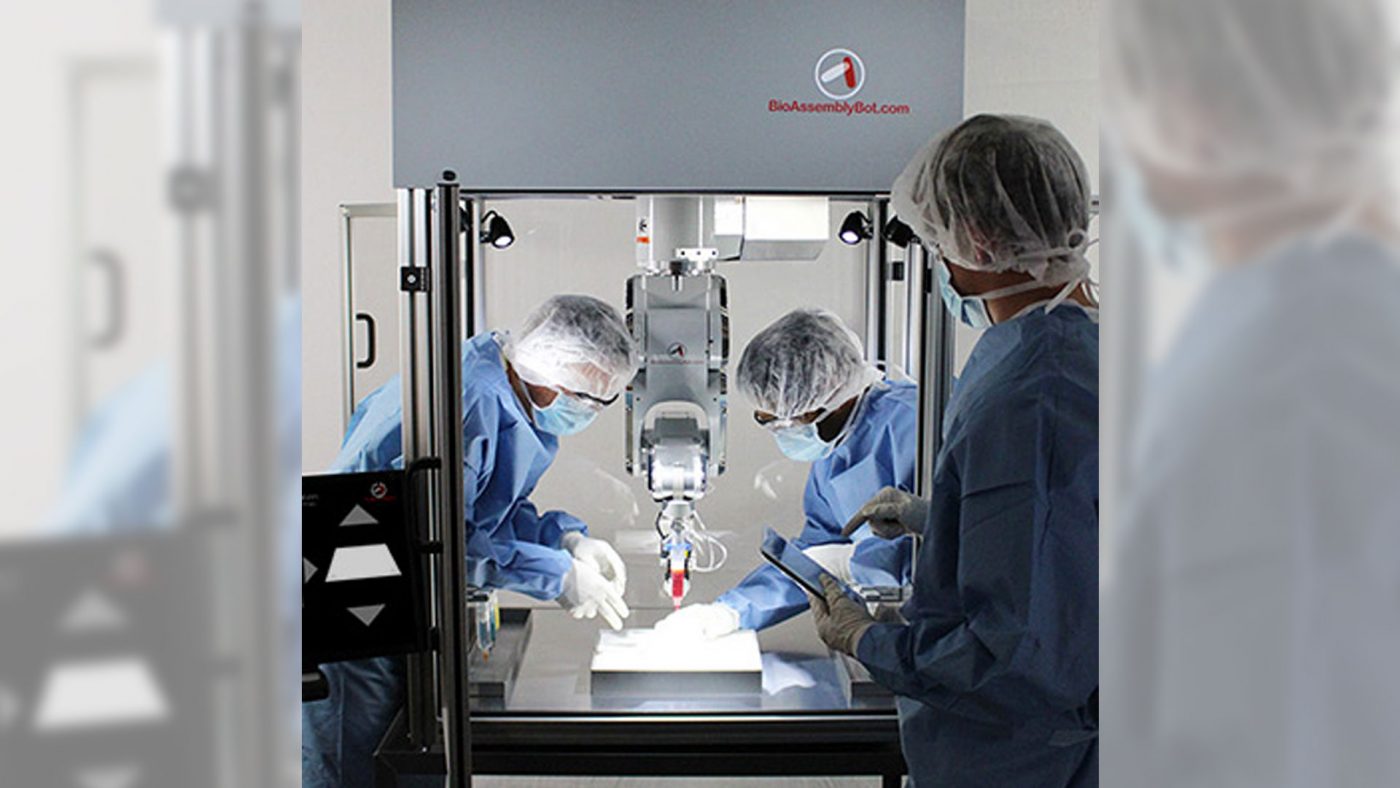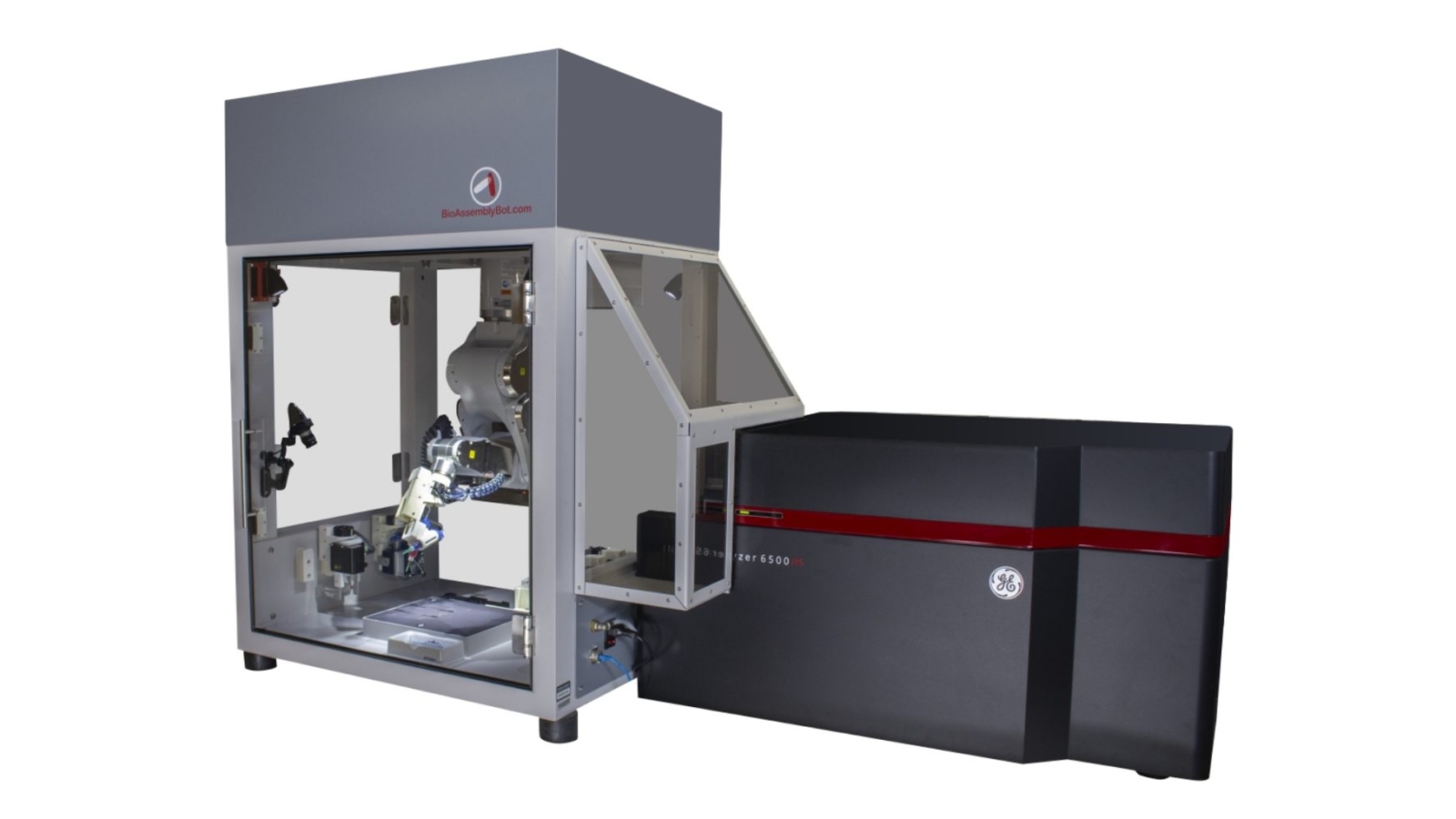GE Healthcare Life Sciences and Advanced Solutions Life Sciences (ASLS), a Kentucky-based biotechnology firm, are collaborating to build an integrated 3D bioprinter by combining their respective technologies.
ASLS’ BioAssemblyBot 3D bioprinter will be integrated with GE Healthcare Life Sciences’ IN Cell Analyzer confocal imaging platform, as part of a strategic R&D and distribution partnership. By combining the two technologies, the partners aim to advance the capabilities of 3D bioprinting for personalized tissue regeneration, allowing for cellular-level assessments into the 3D-bioprinting workflow. Michael Golway, President & CEO of ASLS, comments:
“The power of both of these platforms brings a new level of efficiency, speed and quality with assay designs and 3D biofabrication.”

The BioAssemblyBot 3D bioprinter
ASLS is a subsidiary of Advanced Solutions, a technology company founded in 1987 that is focused on providing integrated software solutions and services to help businesses achieve more effective products, processes, innovations, and ideas. The company has customers in the architecture, engineering, construction, manufacturing, material handling, retail and biomedical industries throughout the United States.
The company’s ASLS outfit is specifically dedicated to the discovery, design, and development of integrated software and hardware solutions for the fields of science that involve living organisms, molecular biology, and biotechnology. To this end, ASLS has developed its BioAssemblyBot 3D printer, a 6-axis robotic arm for biofabrication, alongside Tissue Structure Information Modeling (TSIM) software. This end-to-end solution is intended to help medical researchers and engineers design, visualize, and print 3D virtual models of complex tissue structures.
The BioAssemblyBot 3D printer has been used in a number of research projects exploring the capabilities of 3D bioprinting tissues. For example, French additive manufacturing platform 3D.FAB used the system to develop a “living bandage”, an implantable tissue capable of repairing damaged skin. Scientists at North Carolina State University have also developed a new technique, called Ultrasound-assisted biofabrication (UAB) using ASLS’ BioAssemblyBot 3D printer. The new technique allows the researchers to arrange cells within 3D bioprinted gels.
Manufacturing on Demand

Integrating imaging in the 3D tissue modeling process
GE Healthcare Life Sciences’ IN Cell Analyzer is a laser-based high-content imaging system featuring IRIS confocal technology to optimize cellular imaging for all sample types. By creating an integrated solution combining imaging and 3D bioprinting technologies, GE Healthcare Life Sciences and ASLS seek to empower life scientists and tissue engineers to quickly design, build and image living, vascularized 3D tissues in a single process.
Biopharmaceutical companies currently test their drugs using 2D models, or animal models. With 3D bioprinting, these firms can get access to precise 3D models, which can provide a more physiologically relevant environment for drug testing because they mimic human reactions. The integration of the IN Cell Analyzer and BioAssemblyBot enables the automated inclusion of cellular imaging information into pharmaceutical companies’ tissue modeling processes. Potentially, this can lead to new therapies that can be scaled more quickly and effectively.
Emmanuel Abate, General Manager of Genomics & Cellular Research, GE Healthcare Life Sciences, explains: “Printing multi-material 3D objects inside of microwell plates allows scientists to efficiently move away from traditional 2D monocultures on plastic, to 3D discovery and cytotoxicity models that more accurately reflect native biology and disease. By combining this flexibility and precision of the BioAssemblyBot® with the image quality and speed of the IN Cell Analyzer 6500 HS confocal screening platform, the prospect of automating high content screening in 3D models can become a reality.”
As well as the integrated 3D bioprinter and confocal scanner, the companies are also combining their respective software packages, which include GE Healthcare Life Sciences’ IN Carta cell analysis software and the TSIM design software. This will help to make the 3D bioprinter interoperable with high-throughput screening methods that pharmaceutical developers use to identify drug candidates.
* This article is reprinted from 3D Printing Industry. If you are involved in infringement, please contact us to delete it.
Author: Anas Essop


Leave A Comment